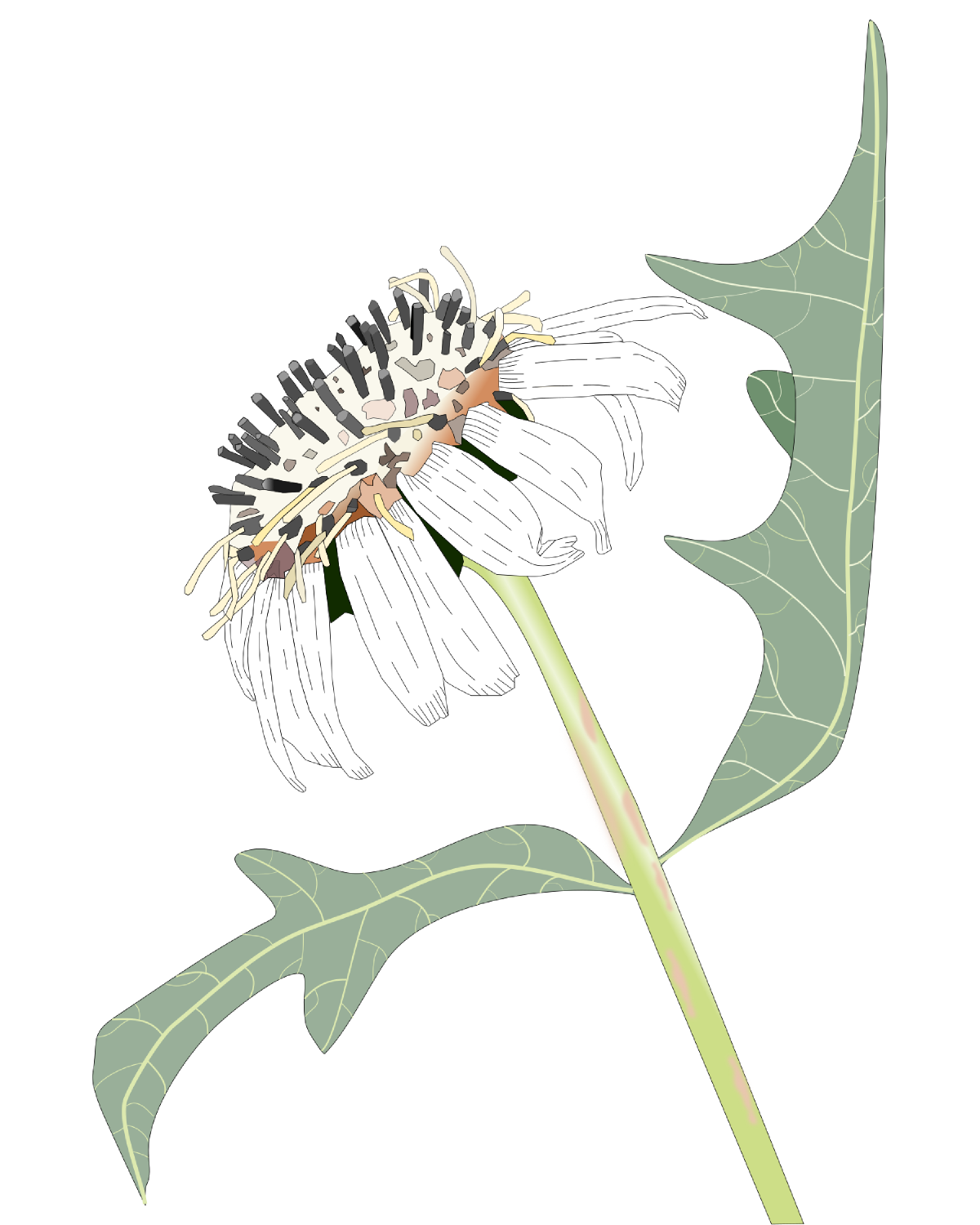The white rosinweed (Silphium albiflorum) is a rare native wildflower in the daisy family, Asteraceae, that is featured on our logo and elsewhere on this site. I became enamored with this species after coming across several specimens in an undeveloped lot adjacent to my home in Round Rock that have sadly since been destroyed. The plant is a slow growing, robust perennial with long, rough textured, deeply lobed leaves and large flowers that, aside from being white, resemble those of a sunflower. Also like sunflowers, the plant twists to face the sun throughout the day. The name rosinweed refers to the bitter resin the plant produces.
This species is unique for several reasons. First, it is the only species in its genus with white flowers. All other Silphium species have yellow flowers. Second, it is endemic to the dry chalk prairies of central and north central Texas. Many species in the Silphium genus are generalists in their habitat preferences and can be found in dry or moist open spaces in the eastern or Midwestern United States, such as the tallgrass prairies of the Great Plains. There are several other Silphium species that specialize in dry, rocky forest openings in the eastern United States, but the white rosinweed is the only species to specialize in rocky soils where grasslands are the predominant biome. Of the 5,000 to 6,000 plant species that are native to Texas, only about 400 (7-8%) are endemic to the state. Furthermore, the white rosinweed is the only species in the subtribe Engelmanniinae that is a Texas endemic. Third, its 12 to 24-inch leaves are much larger than many other Central Texas chalk prairie specialists in the Asteraceae family, like blackfoot daisy or wooly ironweed. Smaller leaves are an adaptation to reduce water loss in a harsh environment. The white rosinweed compensates for its larger leaves by remaining leafless for much of the year, having hair-covered leaves, and storing resources in its taproot, which can extend to a depth of 15 feet. The large leaves are a holdover from its ancestor the compassplant (S. lacinatum) which can reach a height of 9 feet and grows alongside tallgrass species like big bluestem. Fourth, the plant is a reliable bloomer in the heat of the summer when few other wildflowers are blooming. Though its May to July blooming period avoids the monarch migration, there are numerous species of non-migratory pollinators that obtain nectar from the plant, such as sunflower bees of the genus Dieunomia.
Seeing a white rosinweed standing proud among the stunted bunchgrasses and forbs in its natural habitat is a sight to behold. Unfortunately, this Texas endemic is becoming rarer and rarer each year in our area due to habitat destruction. Fortunately, there are protected specimens in Hidden Springs Preserve near Florence. Also, the plant is in cultivation and seeds can be purchased from Native American Seed Company thanks to a partnership with the Xerces Society. Lastly, the Williamson County Plant Rescue Project is working to locate at-risk plants and transplant them to safer locations.

